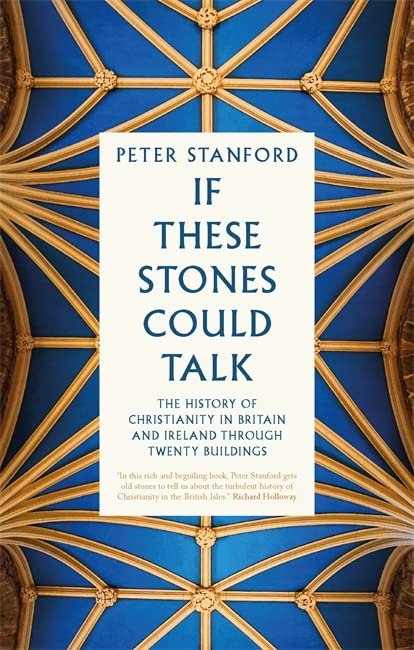If These Stones Could Talk by Peter Stanford
Though the buildings of dissenters and nonconformists are largely absent, this is nevertheless a good and compact history of the Christian faith in these Isles, showing how buildings for worship are not simply functional but sacred space
 If These Stones Could Talk – the history of Christianity in Britain and Ireland through 20 buildings
If These Stones Could Talk – the history of Christianity in Britain and Ireland through 20 buildings
By Peter Stanford
Hodder and Stoughton
ISBN: 978 1 529 39643 0
Reviewed by Stephen Copson
Peter Stanford is a prolific author, often exploring his Roman Catholic milieu. This book allows him to indulge his broader twin passions: ecclesiastical history and church pilgrim. The arrival and development of the Christian faith from its earliest days is told century by century, illustrated by a place of worship of the era.
For anyone wanting a summary of the Christian story, this is a helpful guide. It explores the relationship of Church, rulers and people as it developed. Prelates and princes, politicians and populace. The English Reformation provides a watershed and much of the latter third of the book focuses on the Church of England. There are occasional forays into Ireland, Wales and Scotland.
The buildings chosen are not necessarily the most significant in architectural style or influence, but illustrative of a particular episode or movement in church life in the nations. Readers may offer their own favourites.
The author dwells less on the impact of Dissenters and Nonconformists, and their buildings are largely absent. One Methodist example suffices. No Victorian preaching temples. It does not explore how Dissent and Nonconformity, albeit ever a minority, has helped to shape English religious and political culture over the last four centuries.
Peter Stanford shows that buildings for worship were not simply functional but sacred space. People and patrons invested finance, hopes and theology in wood and stone, bricks and mortar, as well as expressing other, more worldly concerns. They articulated their transience, their reaching for the divine, their sense of being rooted in a physical location. Buildings captured a sense of God with us.
In times when church buildings can sometimes be seen as an hindrance to mission or a drain on resources, it is worth reflecting on what would be lost to our nations’ psyche and landscape, as well to the people of God, if all the buildings were closed. Just what is a church building for?
So, if you are looking for a good and easy-to-read compact history of the Christian faith in these Isles, this book is to be recommended as a pleasing journey through the millennia.
Stephen Copson is a regional minister with the Central Baptist Association
Baptist Times, 02/12/2022